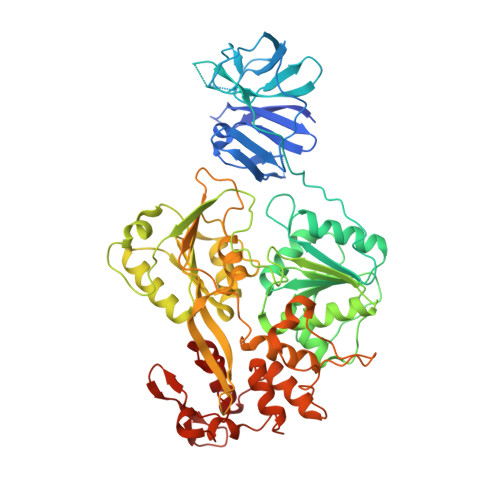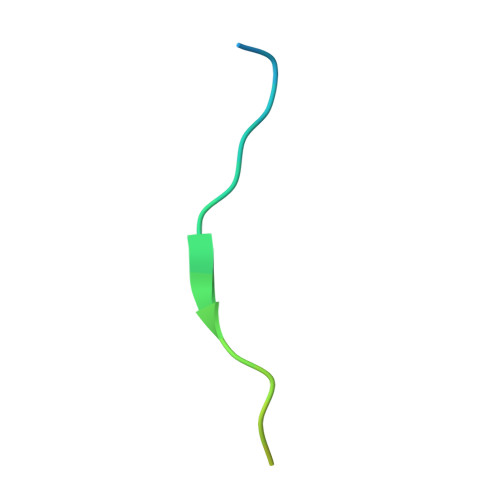Flexibility between the Protease and Helicase Domains of the Dengue Virus Ns3 Protein Conferred by the Linker Region and its Functional Implications.
Luo, D., Wei, N., Doan, D.N., Paradkar, P.N., Chong, Y., Davidson, A.D., Kotaka, M., Lescar, J., Vasudevan, S.G.(2010) J Biological Chem 285: 18817
- PubMed: 20375022
- DOI: https://doi.org/10.1074/jbc.M109.090936
- Primary Citation of Related Structures:
2WHX, 2WZQ - PubMed Abstract:
The dengue virus (DENV) NS3 protein is essential for viral polyprotein processing and RNA replication. It contains an N-terminal serine protease region (residues 1-168) joined to an RNA helicase (residues 180-618) by an 11-amino acid linker (169-179). The structure at 3.15 A of the soluble NS3 protein from DENV4 covalently attached to 18 residues of the NS2B cofactor region (NS2B(18)NS3) revealed an elongated molecule with the protease domain abutting subdomains I and II of the helicase (Luo, D., Xu, T., Hunke, C., Grüber, G., Vasudevan, S. G., and Lescar, J. (2008) J. Virol. 82, 173-183). Unexpectedly, using similar crystal growth conditions, we observed an alternative conformation where the protease domain has rotated by approximately 161 degrees with respect to the helicase domain. We report this new crystal structure bound to ADP-Mn(2+) refined to a resolution of 2.2 A. The biological significance for interdomain flexibility conferred by the linker region was probed by either inserting a Gly residue between Glu(173) and Pro(174) or replacing Pro(174) with a Gly residue. Both mutations resulted in significantly lower ATPase and helicase activities. We next increased flexibility in the linker by introducing a Pro(176) to Gly mutation in a DENV2 replicon system. A 70% reduction in luciferase reporter signal and a similar reduction in the level of viral RNA synthesis were observed. Our results indicate that the linker region has evolved to an optimum length to confer flexibility to the NS3 protein that is required both for polyprotein processing and RNA replication.
- School of Biological Sciences, Nanyang Technological University, 60 Nanyang Drive, Singapore.
Organizational Affiliation:



















